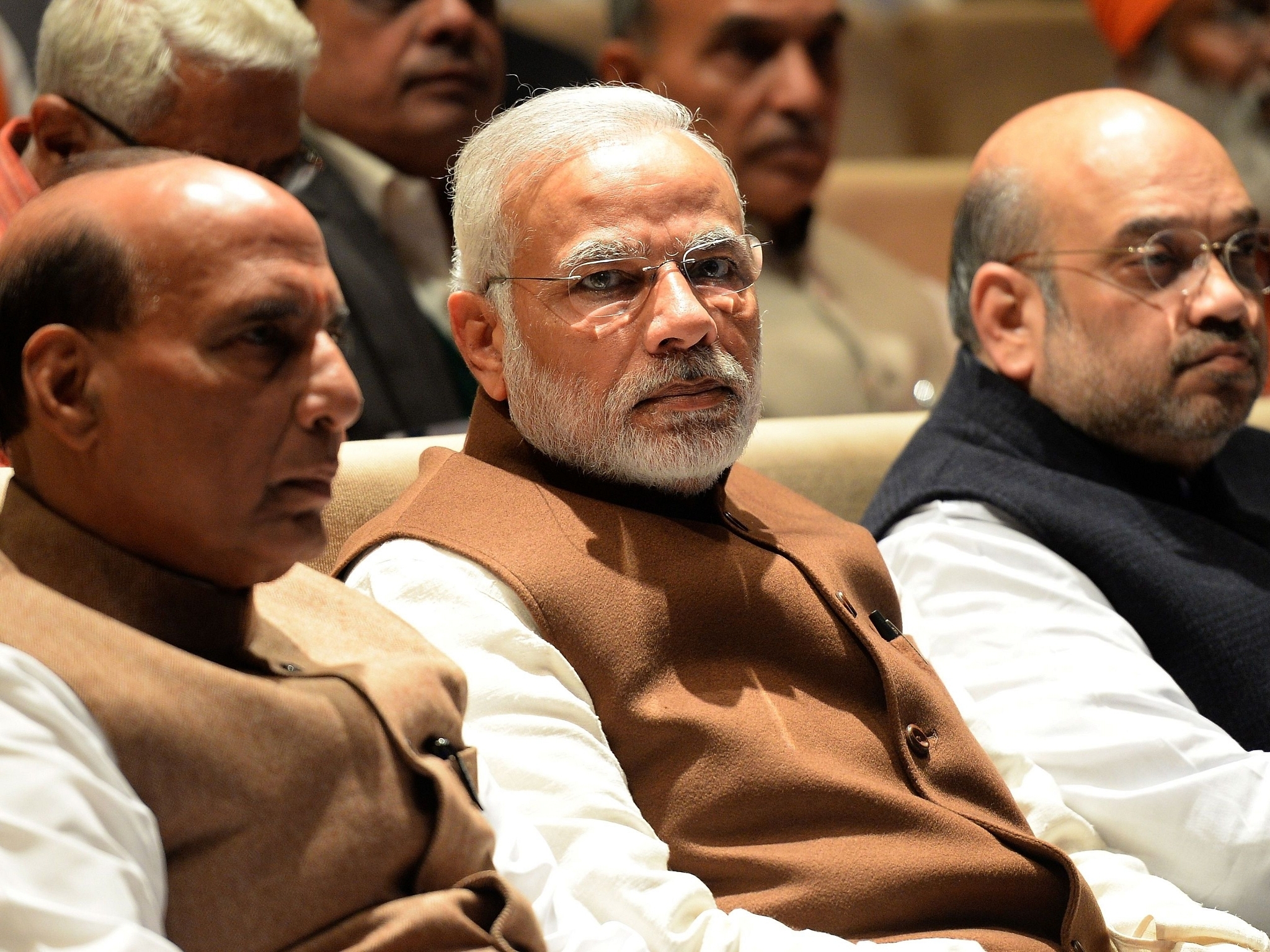Economy
A Sloppy Hatchet Job On Modinomics
- V Anantha Nageswaran critiques Financial Times opinion piece on Modinomics and its performance.

Prime Minister Narendra Modi (centre) at an event in New Delhi. (PRAKASH SINGH/AFP/Getty Images)
The Financial Times view, ‘Modinomics has yet to deliver for many in India’, is a hatchet job, and a sloppily done job at that.
(1) The gross domestic product (GDP) data revision may appear to be tactical rather than statistical, but the lower GDP growth pre-2008 is more than offset by the growth data post-2009 (and pre-2014) that mask the mess that the Congress-led government had left India with.
(2) This government has re-established macro-economic stability. Fiscal deficit (even with the possible minor slippage this year), current account deficit, inflation rate, and the currency are far more stable than before.
(3) The bullet train won't cost Indians much, if at all. That is the most egregious claim in the article that removes any lingering doubt that it might be an objective one. The bullet train comes with a 50-year very soft loan from the Japanese government that is only earmarked for this project.
(4) Demonetisation has helped black money removal if only the Editorial Board had bothered to read up on the latest releases from the Central Board of Direct Taxes on the tax collections, on the tax buoyancy rate, and on the number of Indians (with an annual income of Rs 10 million or more) paying taxes. These monies would fund development expenditure that would benefit the poor. The time horizon for evaluating policy decisions such as this is not two years.
(5) On the employment front, this government has done what governments could do. It came up with a special package for the apparel and leather sectors; it extended some of these concessions to all other sectors; it agreed to bear the payroll taxes for three years for employees with salary income below a threshold. It incentivised hiring, thus. It liberalised apprenticeship schemes.
(6) It has persisted with efforts to ensure access to working capital for small businesses for making it mandatory for corporations to use the Trade Receivables Exchange that would enable suppliers to receive their dues well before the due date.
(7) It has cut corporate income taxes for businesses with revenues below Rs 2,500 million down to 25 per cent.
(8) The financial inclusion scheme – Pradhan Mantri Jan-Dhan Yojana (PMJDY) – has been a success in that the accounts are used by the savers to undertake financial transactions (see this paper, ‘Bank Accounts for the Unbanked: Evidence from a Big Bang Experiment’).
(9) With respect to the clashes with the Reserve Bank of India, a public spat is ungainly and does no credit to either of them. But, some (not all) of the issues that the government raised were legitimate, especially the ones pertaining to the excess capital that the central bank is holding. It is excessive even by the standards of other developing countries and when compared to the benchmark laid down by a Committee of the Reserve Bank of India in 2004.
(10) The demand that a central bank provides liquidity at a time when the economy suffers from a twin balance sheet problem and when the non-banking financing sector is in distress is not an unreasonable demand.
(11) The central bank has got its inflation forecast spectacularly wrong and, as a result, India's real rate of interest has been rather high by historical standards.
(12) Dr Y V Reddy, the distinguished former governor of the Reserve Bank of India, had demanded, in a speech delivered in February 2018, that the central bank release a white paper on the non-performing assets of the banking sector and the central bank's own regulatory role in that. The central bank has not done that yet. The fraud at the Punjab National Bank and the distress (see point 13 below) in IL&FS and later in the rest of the non-banking sector do not reflect well on the central bank’s regulatory performance.
(13) The distress in the balance sheet of the non-banking financial corporation IL&FS is with respect to the loans it had made before 2014 and not after. It is disingenuous to link this with demonetisation. The problems stem from the regulatory architecture of the sector. (Please see this well-written piece.)
Now, the readers might see why I said, at the beginning, that it was
a sloppily done hatchet job.
This piece was first published on the writer’s blog and has been republished here with permission.
Support Swarajya's 50 Ground Reports Project & Sponsor A Story
Every general election Swarajya does a 50 ground reports project.
Aimed only at serious readers and those who appreciate the nuances of political undercurrents, the project provides a sense of India's electoral landscape. As you know, these reports are produced after considerable investment of travel, time and effort on the ground.
This time too we've kicked off the project in style and have covered over 30 constituencies already. If you're someone who appreciates such work and have enjoyed our coverage please consider sponsoring a ground report for just Rs 2999 to Rs 19,999 - it goes a long way in helping us produce more quality reportage.
You can also back this project by becoming a subscriber for as little as Rs 999 - so do click on this links and choose a plan that suits you and back us.
Click below to contribute.
Latest